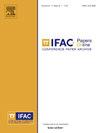Using the Envelope of the Electroencephalogram as a Model for Gaussianity during Sleep and Anesthesia
Q3 Engineering
引用次数: 0
Abstract
Despite the significant differences between sleeping and being under anesthesia, i.e., a physiological process vs. a pharmacologically induced state, they share notable similarities. This is particularly evident when examining the electroencephalogram (EEG), where the spectral content of both states reveals marked increased power within delta (1 - 4 Hz) and alpha (8 - 13 Hz) frequency ranges. To further explore this, a novel analytical framework called the coefficient of variation of the envelope (CVE) was utilized to assess the alpha and delta EEG envelopes during sleep and general anesthesia. This measure is sensitive to different underlying neural dynamics by linking signal morphology and signal energy, specifically through examining deviations from Gaussianity as a marker of synchronicity. Stable episodes were extracted from patients under general anesthesia and controls in non-REM sleep stage 2 and 3. After filtering the EEGs to isolate the delta and alpha bands, the EEG data was segmented into 24-second intervals with a 50% overlap. In addition to the envelope’s energy, CVEs were calculated using the Hilbert transformation. Cutoff values for Gaussianity were derived from simulated EEG signals. CVE values outside the 99% confidence intervals (CI) of the simulated data are considered to indicate either rhythmic (CV E < lowerCI) or pulsatile (CV E > upperCI) activity. The findings revealed differences in CVEs across both delta and alpha-band filtered EEG. Specifically, during sleep, CVEs derived from the delta band were more frequently classified as pulsatile and fell less often within the gaussian range, compared to those observed during general anesthesia. Similar distinctions were observed for alpha-band oscillations. Although the spectral content related to delta and alpha power may appear similar, the morphology of the underlying neural oscillations differs. These differences are critical points that differentiate anesthesia from sleep.
用脑电图包络作为睡眠和麻醉期间高斯性的模型
尽管睡眠和麻醉之间存在显著差异,即生理过程与药物诱导状态,但它们有显著的相似之处。当检查脑电图(EEG)时,这一点尤其明显,两种状态的频谱内容显示在δ (1 - 4hz)和α (8 - 13hz)频率范围内的功率显着增加。为了进一步探讨这一点,我们使用了一种新的分析框架,称为包膜变异系数(CVE)来评估睡眠和全身麻醉时的α和δ脑电图包膜。这一措施是敏感的不同潜在的神经动力学连接信号形态和信号能量,特别是通过检查偏差从高斯作为同步性的标志。在非快速眼动睡眠阶段2和3,从全麻和对照的患者中提取稳定发作。对脑电进行滤波,分离出δ和α波段后,将脑电数据分割为24秒间隔,重叠率为50%。除了包络的能量外,cve还使用希尔伯特变换计算。从模拟的脑电信号中得到高斯度的截止值。在模拟数据的99%置信区间(CI)之外的CVE值被认为表明节律性(CV E <;低ci)或搏动(CV E >;upperCI)活动。研究结果揭示了delta和alpha波段过滤脑电图的cve差异。具体来说,在睡眠期间,与全麻期间相比,来自delta波段的cve更频繁地被归类为搏动性,并且在高斯范围内下降的频率更低。在α波段振荡中也观察到类似的区别。虽然与δ和α功率相关的频谱内容可能看起来相似,但潜在神经振荡的形态不同。这些差异是区分麻醉和睡眠的关键点。
本文章由计算机程序翻译,如有差异,请以英文原文为准。
求助全文
约1分钟内获得全文
求助全文
来源期刊

IFAC-PapersOnLine
Engineering-Control and Systems Engineering
CiteScore
1.70
自引率
0.00%
发文量
1122
期刊介绍:
All papers from IFAC meetings are published, in partnership with Elsevier, the IFAC Publisher, in theIFAC-PapersOnLine proceedings series hosted at the ScienceDirect web service. This series includes papers previously published in the IFAC website.The main features of the IFAC-PapersOnLine series are: -Online archive including papers from IFAC Symposia, Congresses, Conferences, and most Workshops. -All papers accepted at the meeting are published in PDF format - searchable and citable. -All papers published on the web site can be cited using the IFAC PapersOnLine ISSN and the individual paper DOI (Digital Object Identifier). The site is Open Access in nature - no charge is made to individuals for reading or downloading. Copyright of all papers belongs to IFAC and must be referenced if derivative journal papers are produced from the conference papers. All papers published in IFAC-PapersOnLine have undergone a peer review selection process according to the IFAC rules.
 求助内容:
求助内容: 应助结果提醒方式:
应助结果提醒方式:


